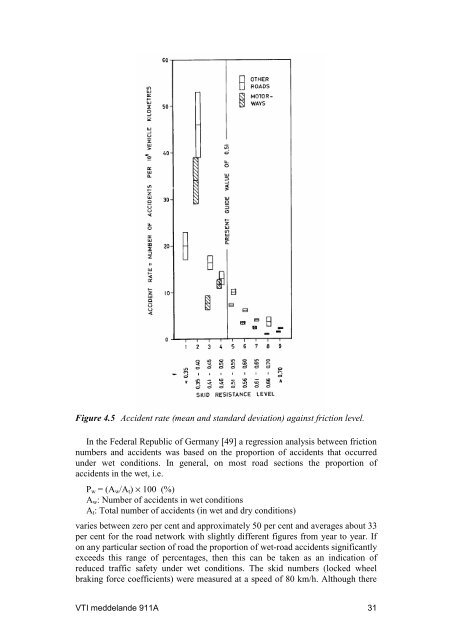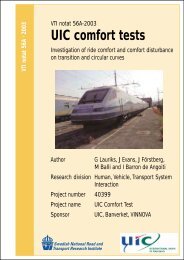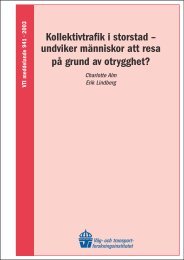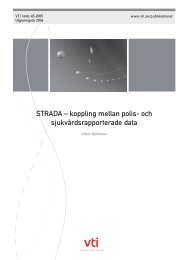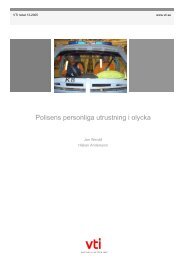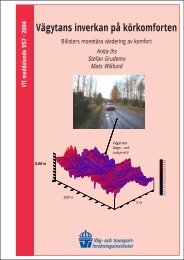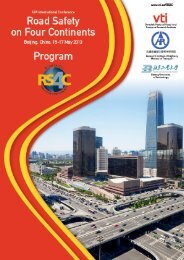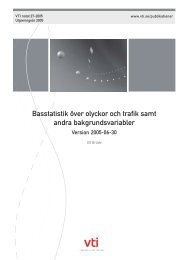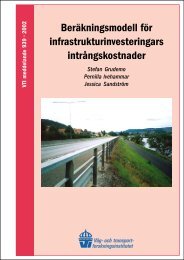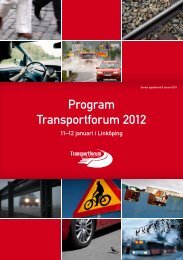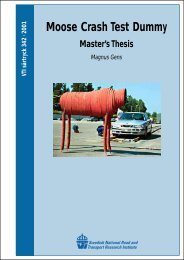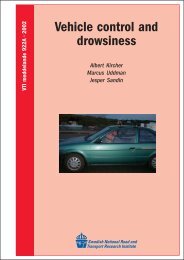Friction measurement methods and the correlation between road - VTI
Friction measurement methods and the correlation between road - VTI
Friction measurement methods and the correlation between road - VTI
Create successful ePaper yourself
Turn your PDF publications into a flip-book with our unique Google optimized e-Paper software.
Figure 4.5 Accident rate (mean <strong>and</strong> st<strong>and</strong>ard deviation) against friction level.In <strong>the</strong> Federal Republic of Germany [49] a regression analysis <strong>between</strong> frictionnumbers <strong>and</strong> accidents was based on <strong>the</strong> proportion of accidents that occurredunder wet conditions. In general, on most <strong>road</strong> sections <strong>the</strong> proportion ofaccidents in <strong>the</strong> wet, i.e.P w = (A w /A t ) × 100 (%)A w : Number of accidents in wet conditionsA t : Total number of accidents (in wet <strong>and</strong> dry conditions)varies <strong>between</strong> zero per cent <strong>and</strong> approximately 50 per cent <strong>and</strong> averages about 33per cent for <strong>the</strong> <strong>road</strong> network with slightly different figures from year to year. Ifon any particular section of <strong>road</strong> <strong>the</strong> proportion of wet-<strong>road</strong> accidents significantlyexceeds this range of percentages, <strong>the</strong>n this can be taken as an indication ofreduced traffic safety under wet conditions. The skid numbers (locked wheelbraking force coefficients) were measured at a speed of 80 km/h. Although <strong>the</strong>re<strong>VTI</strong> meddel<strong>and</strong>e 911A 31


